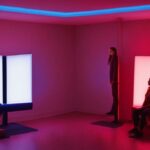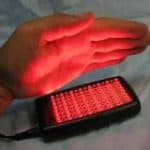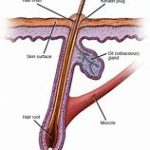Last Updated on 12 months by Francis
Light therapy is a form of treatment used in psychology that involves exposure to artificial light to alleviate certain mental health conditions such as seasonal affective disorder (SAD), insomnia, and depression. The use of light therapy is based on the understanding that exposure to bright light can help regulate the body’s circadian rhythm, which in turn can positively affect one’s mood and sleep patterns. In this topic, we will delve deeper into what light therapy is, how it works, and the potential benefits and drawbacks of this treatment approach.
Contents
What is Light Therapy?
Light therapy is a form of treatment that uses specific wavelengths of light to affect the body and the mind. In psychology, light therapy is used to treat conditions such as seasonal affective disorder (SAD), depression, anxiety, and sleep disorders. The therapy is based on the theory that exposure to certain light wavelengths can have a positive effect on the brain’s chemistry, leading to improved mood, better sleep, and increased energy levels.
The Science Behind Light Therapy
Light therapy works by stimulating the brain’s production of serotonin and melatonin. Serotonin is a neurotransmitter that regulates mood, appetite, and sleep, while melatonin is a hormone that helps regulate the body’s sleep-wake cycle. Exposure to bright light can increase the brain’s production of serotonin, leading to improved mood and decreased symptoms of depression and anxiety. Similarly, exposure to dim light can increase the production of melatonin, leading to better sleep.
How Does Light Therapy Work?
Light therapy works by exposing individuals to bright light for a specific duration each day. The light must be of a specific intensity and wavelength to be effective. Typically, light therapy is administered using a lightbox, which emits bright light that mimics natural sunlight. The individual sits in front of the lightbox for a set amount of time each day, usually in the morning, to receive the maximum benefit. The duration and intensity of the light therapy depend on the individual’s condition and the severity of their symptoms.
Benefits of Light Therapy
Light therapy has several benefits, including:
- Improved mood
- Reduced symptoms of depression and anxiety
- Better sleep
- Increased energy levels
- Reduced symptoms of seasonal affective disorder (SAD)
Who Can Benefit from Light Therapy?
Light therapy can benefit individuals who experience symptoms of depression, anxiety, sleep disorders, and SAD. It is also beneficial for individuals who work indoors or live in areas with limited exposure to natural sunlight. However, light therapy is not suitable for everyone. Individuals with certain medical conditions, such as bipolar disorder, skin conditions, and eye conditions, should not undergo light therapy without consulting with a medical professional.
How to Start Light Therapy
Before starting light therapy, individuals should consult with a medical professional to determine if it is a suitable treatment option for their condition. The medical professional will help determine the appropriate duration and intensity of the light therapy and provide guidance on how to use the lightbox safely and effectively. It is essential to follow the medical professional’s instructions carefully to receive the maximum benefit from light therapy.
Tips for Effective Light Therapy
To get the most out of light therapy, individuals should:
- Use a lightbox with a minimum intensity of 10,000 lux.
- Sit in front of the lightbox for 20-30 minutes each day.
- Use the lightbox in the morning to help reset the circadian rhythm.
- Keep the lightbox at a distance of 12-18 inches from the face.
- Use the lightbox every day, even on weekends.
FAQs: Define Light Therapy in Psychology
What is Light Therapy?
Light therapy is a non-invasive treatment where a person is exposed to bright light for a specific time to treat mood disorders such as seasonal affective disorder (SAD) and depression. The treatment is designed to regulate the body’s circadian rhythm, which is disrupted in people with seasonal depression. Light therapy has also shown promising results in treating symptoms of insomnia and eating disorders.
How does Light Therapy work?
Light therapy is thought to work by stimulating the production of serotonin, a hormone that regulates mood, and reducing the production of melatonin, which regulates sleep. Exposure to light helps regulate the body’s internal clock by suppressing the release of melatonin in the morning and promoting its release in the evening, making it easier to fall asleep at night and wake up in the morning.
What are the benefits of Light Therapy?
Light therapy has been shown to be effective in treating seasonal affective disorder, depression, insomnia, and eating disorders. It is considered a safe and non-invasive treatment option that does not require medication. It also has a high success rate, with up to 80% of people reporting an improvement in their symptoms after using light therapy.
Is Light Therapy safe?
Light therapy is generally considered safe for most people. The most common side effects of light therapy are headache, eyestrain, and nausea, which can be reduced by adjusting the intensity and duration of the light exposure. People with skin conditions or certain medical conditions, such as bipolar disorder and epilepsy, should consult their doctor before trying light therapy.
How long does Light Therapy take to work?
Light therapy typically takes a few days to several weeks to start working. Most people start to see an improvement in their symptoms within a week or two of starting light therapy. However, it’s important to continue using light therapy, even if you start to feel better, as stopping the treatment too early can cause a relapse of symptoms.




.jpg)


